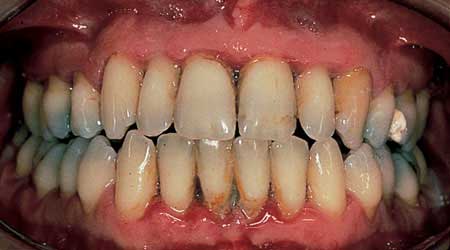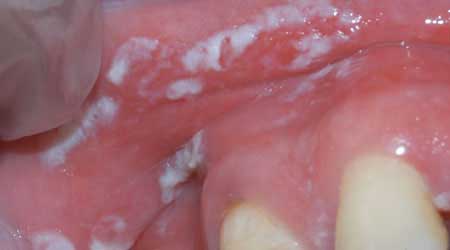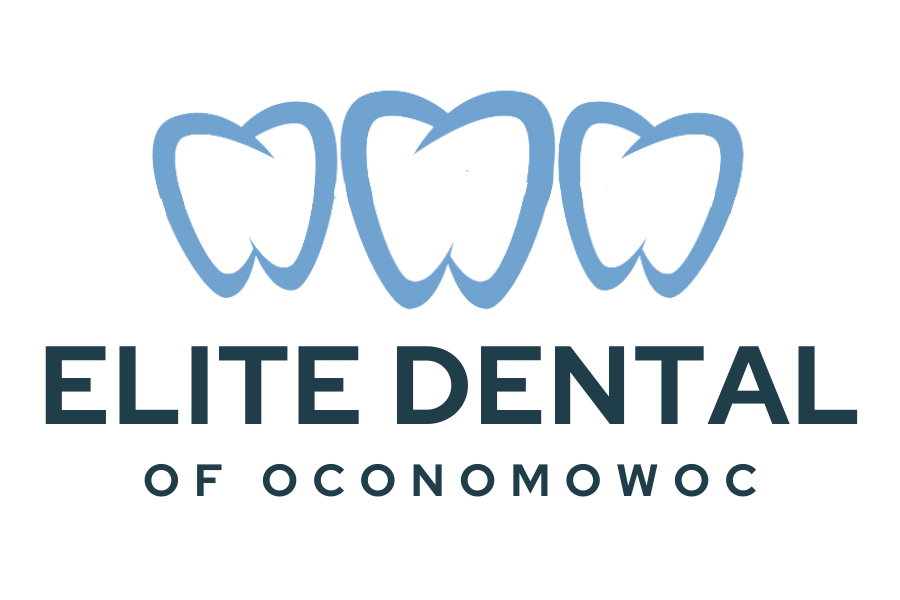What 10 Common Mouth Issues Really Look Like (Part 2 of 3)
You know good dental habits can help prevent things like cavities and gingivitis, but you may not know what conditions like these really look like or how they can affect your mouth. Use this visual guide to learn more about some of the most common dental health issues, symptoms to watch for and the potential treatments that are available. Please note: This content is for informational purposes only. Only a dentist, physician or other qualified health care professional can make a diagnosis.

Gingivitis
Gingivitis is the earliest stage of gum disease, an infection of the tissues around your teeth caused by plaque. If you have gingivitis, your gums may become red, swollen and bleed easily. You may also experience bad breath. Because gum disease is usually painless, you may not know you have it.
You are more likely to develop gum disease if you skip brushing and flossing, use tobacco, have crooked teeth that are hard to keep clean, are pregnant, have diabetes or take certain medications. When in its early stages, the disease is still reversible and your gums can be returned to good health with a professional cleaning from your dentist, along with daily brushing and flossing.

Periodontitis
Periodontitis is the more advanced form of gum disease, a major cause of tooth loss in adults. According to the CDC, nearly half of U.S. adults suffer from it. The disease can be reversed in early stages, but damage may be permanent the longer it goes untreated. Although you may not be aware of the gum disease in your mouth, abscesses can develop which usually painful. Symptoms include bleeding, swollen gums, persistent bad breath or bad taste, loose permanent teeth and a change in bite. Your teeth may appear to become longer as gums and bone recede. There are many treatments available, including deep cleanings known as scaling and root planing. Talk to your dentist to find out what’s best for you.

Thrush
Thrush is a yeast infection that looks like white film in your mouth. You’re more likely to get thrush if you have an illness that affects your immune system. This includes people with HIV/AIDS or cancer, as well as people using steroids to manage their asthma. People with untreated or uncontrolled diabetes are also susceptible because sugar in saliva encourages yeast to grow. Thrush is also common in people who wear dentures. If you have symptoms, see your dentist. After a scraping to confirm you have thrush, your dentist can prescribe medicine to clear it up.
To read the entire article visit MouthHealthy.org.
Drs. Leaman, Setnicar & Piacsek, S.C.
James Leaman DDS, Joseph Setnicar DDS, Stacie Piacsek DDS
820 Summit Avenue
Oconomowoc, WI 53066
262-567-4466
